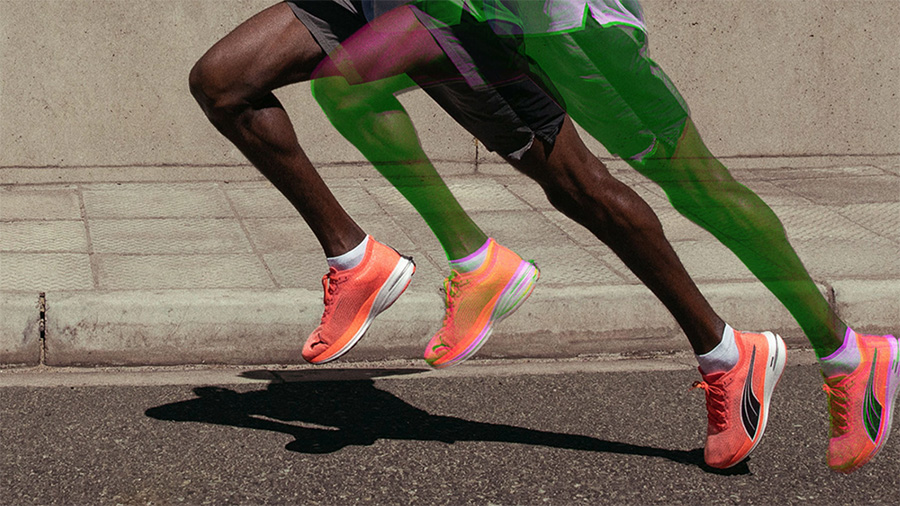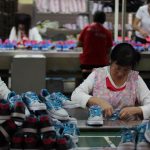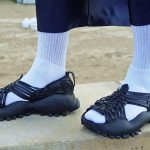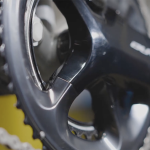Puma SE shares were down in double-digits in early trading in Europe even as the company reported second-quarter results that company CEO Arne Freundt said “fully delivered” on its outlook for the quarter and that the company was on track to deliver on its outlook for the full year.
However, analysts and investors took a different view, pushing shares lower on what they called Puma’s tempered earnings outlook for the year and muted consumer sentiment, a miss on second-quarter EBIT that reportedly came in 3 percent below expectations and Q2 sales growth that fell short of the consensus estimate, according to analysts at RBC Capital Markets.
Second quarter sales grew by 2.1 percent currency-adjusted (ca) year-over-year to €2.12 billion, while currencies continued to be a headwind, negatively impacting sales in euro terms by approximately €50 million in Q2 2024 (-0.2 percent reported). RBC said the consensus estimate called for 3.7 percent growth year-over-year.
Region Summary
- Americas region sales increased 9.0 percent (ca) to €887.5 million, with both the U.S. and LATAM contributing to the growth and showing a sequential improvement.
- Asia/Pacific region sales grew 1.9 percent (ca) to €411.9 million, driven by continued growth in Greater China and sequential improvement in the rest of APAC.
- EMEA region sales decreased 4.3 percent (ca) to €817.9 million due to a decline in EEMEA from a strong prior-year quarter (EEMEA grew +111 percent ca in Q2 2023), while Europe returned to growth.
Channel Summary
Wholesale business declined by 3.3 percent (ca) to €1.53 billion, reportedly due to the decline in EEMEA. In all other regions, Puma’s Wholesale business improved sequentially quarter-on-quarter, driven by continued strong sell-through and improved inventory levels in the market.
Direct-to-consumer (DTC) business grew 19.5 percent (ca) to €587.7 million, supported by continued brand momentum and scaled-back promotions. Sales in owned and operated retail stores increased 16.5 percent (ca) and e-commerce increased 25.6 percent (ca). The company said this resulted in an increased DTC share of 27.8 percent from 24.3 percent in Q2 2023, in line with expectations.
Category Summary
- Footwear sales were flat (ca) at €1.10 billion, struggling to anniversary against a strong prior-year quarter that posted 18.2 percent (ca) growth. Puma said all Performance categories and Sportstyle Core performed “very well” in the 2024 quarter.
- Apparel sales grew 9.2 percent (ca) to €705.6 million.
- Accessories sales declined by 4.7 percent (ca) to €314.8 million.
Income Statement Highlights
Gross margin improved by 200 basis points year-over-year to 46.8 percent of sales in Q2, compared to 44.8 percent in Q2 2023. Significant headwinds from currencies were said to be “more than offset” by a favorable product and distribution channel mix and tailwinds from sourcing and freight.
Operating expenses (OPEX) increased by 4.3 percent to €879.3 million in the quarter. Puma said the increase was primarily due to the continued growth of its DTC business and increased costs from warehouse and digital infrastructure projects, while all non-demand-creating costs remained under strong control. In addition, currency-related headwinds weighed on the OPEX margin, which increased by 180 basis points to 41.5 percent of sales from 39.8 percent in Q2 2023.
The operating result (EBIT) increased by 1.6 percent to €117.2 million in Q2 despite negative currency effects on sales, gross profit margin and the OPEX margin. Consequently, the EBIT margin improved by ten basis points to 5.5 percent of sales, compared to 5.4 percent in Q2 2023.
The financial result decreased to negative €42.6 million from negative €23.0 million in the year-ago quarter due to higher currency related losses and a lower interest result.
Net income decreased 23.8 percent year-over-year to €41.9 million, or €0.28 per share, from €55.0 million, €0.37 per share, in the 2023 second quarter.
“The development of the operating result and net income is fully in line with our expectations that the second half of the year, particularly in the fourth quarter, will be stronger than the first half and that net income will improve in line with the operating result outlook for FY 2024,” the company said in a media release.
Outlook 2024
The company characterized the year’s first half as a volatile environment with persistent currency headwinds, stressed supply chains and muted global consumer sentiment. In this challenging environment, Puma said it “continued to make progress on its strategic initiatives of brand elevation, product excellence, distribution quality with a particular focus on the U.S. and China, and focused on strong sell-through and the best possible service to its retail partners, brand ambassadors and consumers.”
Based on the results of the first half of the year and supported by building brand momentum as well as by what Puma reported was a strong order book for the second half of the year, Puma reiterated its outlook for the 2024 financial year, calling for mid-single-digit currency-adjusted sales growth.
Taking into account the external factors of higher freight costs, changing duties and continued muted consumer sentiment, especially in China, Puma narrowed its outlook for the operating result (EBIT) to a range of €620 million to €670 million, slightly lower than its previous outlook estimate in the range of €620 million to 700 million, but still higher than the 2023 EBIT of €621.6 million. The company expects net income to see 2024 growth in line with the operating result against 2023 net income of €304.9 million.
Image courtesy Puma
















